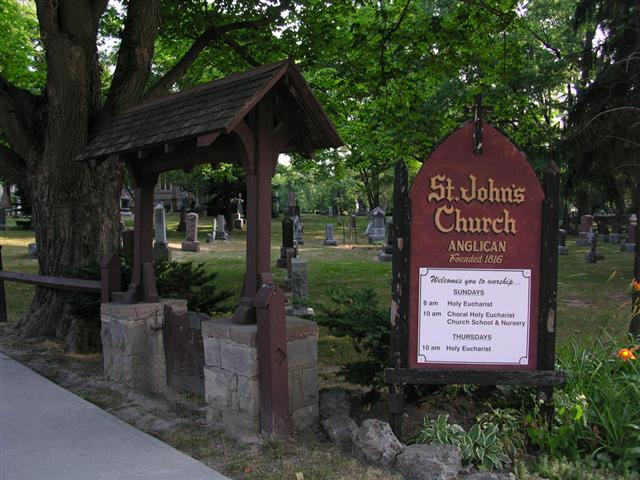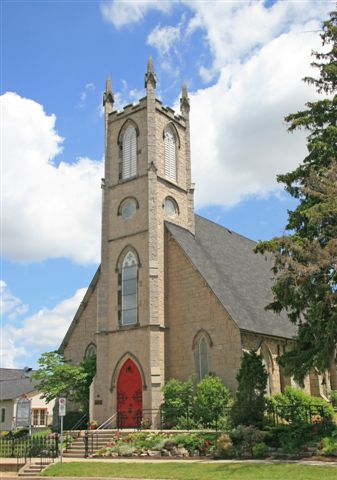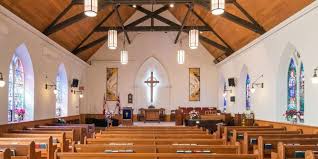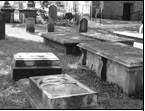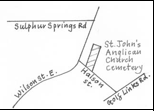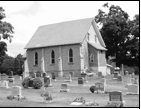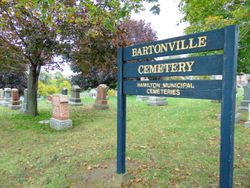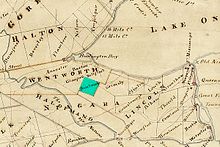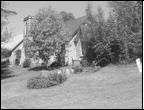Description
CEM 125_st_johns_anglican_church_cemeteryStreet
Other Known Names: Ancaster Union Cemetery Street Address:
274 Wilson Street East Location: Lot 45, Concession 2
Type of Cemetery: Religious (Anglican, Presbyterian)
Responsible Agency: St. John’s Anglican Cemetery Board
Status for Burials: Open for burials Plot Plan: None Size: Medium, 734 monuments
Fencing: Chain link, wood, and hedgerow Monument Types: Flat, upright, column and altar Monuments of: Marble, granite, wood
History:
Date of Opening: 1823
The Anglican congregation in Ancaster dates from the 1790s when the community of Wilson’s Mill was ministered by Reverend John Stuart. The current church was built in 1824 on land given by George Rousseaux, using local Anglican and Presbyterian labour and funds. Originally the church and cemetery were to be used by these two denominations and any other Protestant Church that requested burial for their members. The first burial took place in 1823, but by 1826 the church and cemetery were solely Anglican. Like St. Andrew’s Presbyterian Cemetery, there is an assemblage of table tombs. The cemetery is the final resting place of many notable Ancaster residents. It remains in use and is maintained by the Church.
A Brief History of St. John’s Church, Ancaster
|
The Parish of St. John was started in 1816 by the arrival of a missionary priest, the Reverend Ralph Leeming, sent to Canada West from the U.K. by the Society for the Propagation of the Gospel. Bishop Mountain of Quebec directed him to serve the area at the western end of Lake Ontario, centred in Ancaster. After his arrival in October of 1816 he reported that the area had about 800 Methodists, 200 Anglicans and 200 Presbyterians. By 1824 the Anglicans and the Presbyterians had built a ‘union church’ together, on the site where the limestone structure of St. John’s now stands. The cemetery, consecrated immediately to the east of the church, dates back to these earliest days when many notable people of Ancaster’s history were interred here. A walk around it today tells us ‘who was who’ in the little village. Many names are prominent in the local history. In 1826 the Reverend George Sheed arrived in Ancaster to minister to the Presbyterians. After two years, in 1828, the Presbyterians moved to their own church on Sulphur Springs Road. The Anglicans bought out the Presbyterians’ interest in the Ancaster Free Church with money loaned to them by Job Lodor. On October 10th, 1830, Bishop Charles Stewart consecrated the smart looking frame church as an Anglican place of worship and named it the Church of St. John. A limestone chancel was added to the frame building in 1865, when the Rev. Featherstone Lake Osler was Rector. Tragically, an overheated stove caused a fire which destroyed the frame portion of the building in February, 1868, By May of 1870 the congregation had rallied and had built the present stone building in a neo-gothic style. When the debt was cleared, the new building was consecrated on May 1, 1873. Built on a high point of the escarpment, the tower with its finials could be seen for miles around. Over the years memorial stained glass windows added old-world charm to the building, and we are further reminded of our rich history when we read the memorial brass plaques on the walls. Further east on Halson Street a new rectory was constructed in 1873. This stately Victorian home only recently passed into private hands, after being occupied successively by at least 10 clergy families. A strong musical tradition has always prevailed at St. John’s Church. There have been four organs over the years. The first, we presume a pump organ, was installed in the original church in 1856; next came a pipe organ in 1888 in the new church; the third, a Woodstock pipe organ, was installed in 1930, and finally, the present organ, built by Keates-Geisler, was installed in 1988. Throughout, the congregation has supported many excellent organist/choir masters. During most of a century St. John’s was without a Parish Hall (they used an old house for day school and Sunday School for some years around 1880) but this condition was rectified when in 1951 ground was broken at 37 Halson Street to accommodate a Hall, with a stage, kitchen and several meeting rooms. This provided the meeting place for many groups, both within the congregation and from the community at large, as well as a rapidly expanding Sunday School of baby-boomers. About the same time as the Parish Hall was built, St. John’s purchased the Gurnett House, which was adjacent to the church building at 272 Wilson Street East. It served as a residence for a sequence of Assistant Curates and housed the church offices and a tenant on the second floor. In 2003 that House was replaced by the present Parish Hall integrated with the church. That addition is 14,000 square feet and includes The Great Hall, new offices, Sunday School and meeting rooms, flexible use gathering area, Nursery, Vestry and Sacristy. The mortage for the addition was burned in 2011. |
